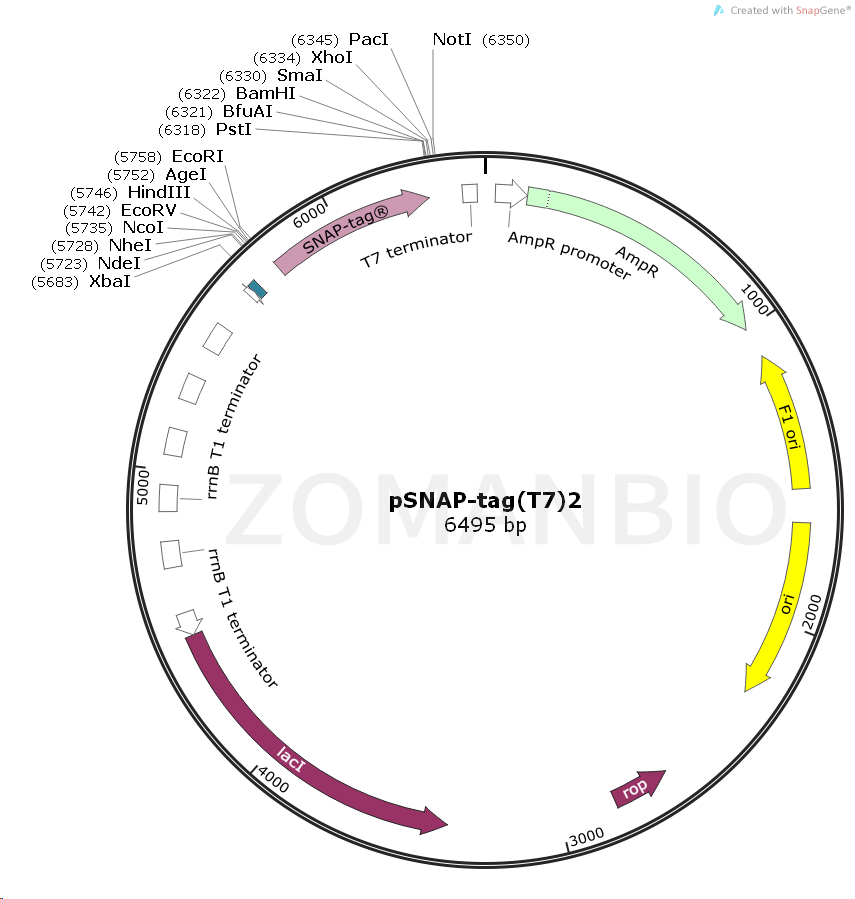■ 基本信息
启动子: | T7 promoter |
复制子: | Ori,F1 ori |
终止子: | rrnB T1 terminator |
质粒分类: | 大肠杆菌质粒;大肠其它质粒;其它大肠质粒 |
质粒大小: | 6495bp |
质粒标签: | SNAP-tag |
原核抗性: | Amp |
| 克隆菌株: | DH5a |
培养条件: | 37度 |
■ 质粒属性
质粒宿主: | 大肠杆菌 |
质粒用途: | 蛋白表达
|
片段类型: | ORF
|
片段物种: |
|
原核抗性: | Amp |
真核抗性: |
|
荧光标记: |
|
■ 质粒简介
pSNAP-Tag(T7)2是一个大肠杆菌表达质粒,T7启动子驱动SNAP标签和目的基因融合表达。pSNAP-tag (T7)-2 Vector is an Escherichia coli expression plasmid encoding the SNAP-tag® protein. Expression is under control of the IPTG inducible T7 promoter. The pSNAP-tag(T7)-2 Vector can also be used as a control plasmid expressing the SNAP-tag protein (20 kDa). The target gene should be cloned as a fusion to the Nor C-terminus of the SNAP-tag. The SNAP-tag is a novel tool for protein research, allowing the specific, covalent attachment of virtually any molecule to a protein of interest. The SNAP-tag is a protein based on human O6 - alkylguanine-DNA-alkyltransferase (hAGT)(1,2,3). SNAP-tag substrates are derivatives of benzyl purines and benzyl pyrimidines. In the labeling reaction, the substituted benzyl group of the substrate is covalently attached to the SNAP-tag. There are two steps to using this system: subcloning and expression of the protein of interest as a SNAP-tag fusion, and labeling of the fusion with the SNAP-tag substrate of choice. Cloning and expression of SNAP-tag fusion proteins are described in this document. The labeling of the fusion proteins with SNAP-tag substrates is described in the instructions supplied with SNAPtag substrates.
质粒只保证关键序列正确,不保证表达效果。
■ 质粒图谱

■ 质粒序列
质粒序列请下载: ZK342pSNAP-Tag(T7)2大肠表达质粒.txt
ZK342pSNAP-Tag(T7)2大肠表达质粒.txt



